 | ||
The Levee District was the red-light district of Chicago, Illinois, from the 1880s until 1912, when police raids shut it down. The district, like many frontier town red-light districts, got its name from its proximity to wharves in the city. The Levee district encompassed 4 blocks in Chicago’s South Loop area, between 18th and 22nd street. It was home to many brothels, saloons, dance halls, and the famed Everleigh Club. Prostitution boomed in the Levee District, and it was not until the Chicago Vice Commission submitted a report on the city’s vice districts that it was shut down.
Contents
- History
- Closure of The Levee
- Notable persons associated with the Levee District
- Prostitution in Chicago After the Levee District
- References
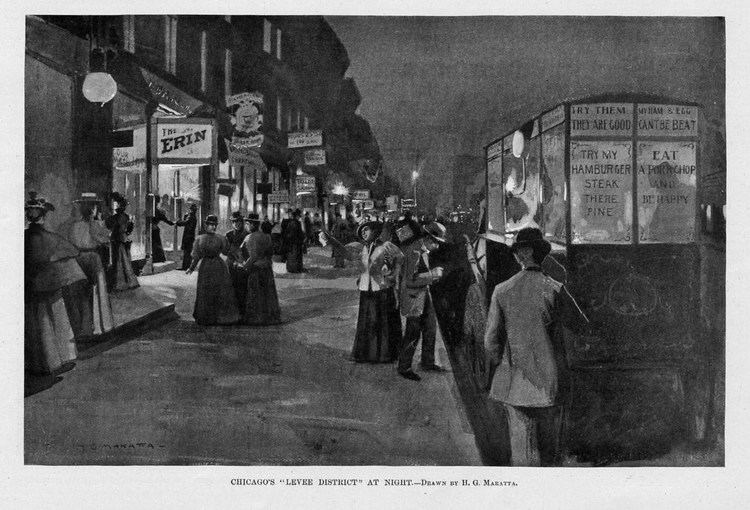
History
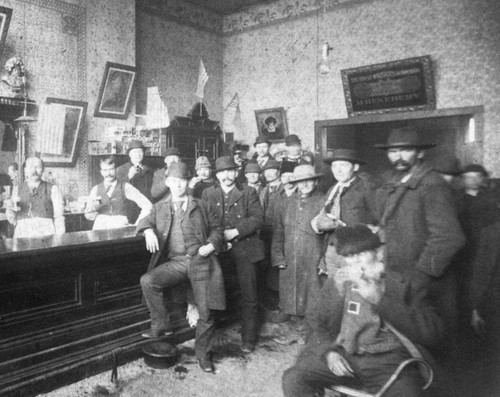
The Levee District opened in the 1880s and was home to many brothels, saloons, dance halls, and similar places. These businesses ranged from rough dives, like Pony Moore’s or the Turf Exchange Saloon, to prestigious, infamous clubs like The Everleigh Club.
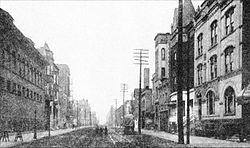
In order to receive protection, Levee inhabitants would annually attend the biggest event in the district, The First Ward Ball. The First Ward Ball was an event in which Levee residents gathered to celebrate the triumphs brought to them by Michael 'Hinky Dink' Kenna and “Bathouse” John Coughlin. Madams, corrupt businessmen, dance-hall owners, saloon owners, prostitutes, brothel owners, and gamblers attended the event to support their aldermen for continuing to protect them from the law. The money they raised came from the purchase of tickets for the event and alcohol. When anti-vice reformers protested the ball, Kenna justified it as benefiting the people in the district through education and community programs. The First Ward Ball of 1908 was the most significant ball because it was the last that the most prominent figures of the Levee attended. That year, anti-vice reformers had tried to stop the ball by bombing The Coliseum, the arena where it would be held. The ball still went on and was successful. The following ball would prove otherwise. The First Ward Ball of 1909 was unsuccessful because anti-vice reformers worked towards getting the city to revoke the event's alcohol license. They succeeded, and about 3,000 people attended, less than a quarter of the attendance of the previous balls. That year, reformers like the Woman's Christian Temperance Union (WCTU), worked towards stopping events like these because they felt that they harmed the families in the Levee.
Anti-Vice Reformers
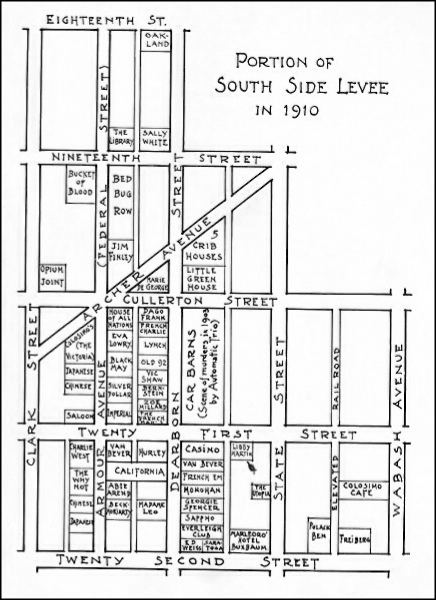
The Levee district's success in vice came to an end when reformers such as the Woman's Christian Temperance Union (WCTU) and Chicago Vice Commission CVC (established by Carter Harrison, Jr.) worked towards publicly exposing the issues of white slavery and alcohol. The WCTU had a “department of rescue” to save women forced into slavery. They also had a “department of social purity,” which raised sexual consent laws. The WCTU paid investigators to conduct studies on forced prostitution in Midwest lumber camps that would help them publish a journal of stories of women working as prostitutes in Chicago (Levee District), San Francisco, and New York.
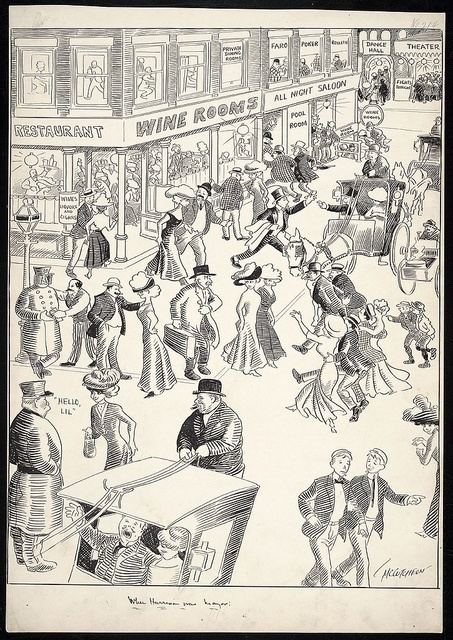
The Chicago Vice Commission, focused terminating vice districts, also worked towards investigating the conditions for women in the Levee.The members spoke to prostitutes, police, and neighborhood organizations to investigate the issue of prostitution. They published a report, The Social Evil in Chicago, which included prostitution statistics and recommendations for improvement. The report concluded that about 5,000 professional prostitutes worked in Chicago, and about 5 million men were receiving services from them, for which the women received about $25 weekly. They were mostly uneducated and unskilled, and they had little to no opportunities for economic advancement. The report was read around the world and influenced vice commissions in 43 cities to close vice districts.
Closure of The Levee

It was long, hard process to close down the entire Levee District. It began on January 9th, 1910, when Nathaniel Ford Moore died in Vic Shaw’s brothel. She wanted to frame Minna Everleigh for the death, but Everleigh found out about Moore before Shaw got the chance. Thus, Shaw was forced to call the police to report the death after which her brothel was closed. A year later, on October 3rd, 1911, the state’s attorney issued warrants for 135 people associated with the Levee, including Big Jim Colosimo, Ed Weiss, Roy Jones and Vic Shaw. The warrants shut down halls, saloons and brothels. Many people were arrested within the brothels; in Marie Blanchey’s brothel, 20 women and 30 men were arrested. Word spread about corruption in the government so, on October 24th, 1911, Mayor Harrison ordered the closure of the Everleigh Club which was shut down the next day. Many businesses in the Levee District closed in 1911, but the district held on for two more years. One of the last brothels to close was Freiberg’s Dance Hall, which celebrated its last night on August 24th, 1914.
Notable persons associated with the Levee District
Prostitution in Chicago After the Levee District
Although the Levee District had closed down in 1912, prostitution continued to be a problem in Chicago. The closing of the Levee had initiated changes throughout the city's sexual commerce. There were no longer brothels, but that didn’t stop many men and women. They moved from brothels and saloons to cabarets, nightclubs and other nighttime scenes. Solicitation was still available, and the sex entrepreneurs were still willing to pay law enforcement to keep quiet. In the beginning of the 1920s, vice syndicates of the time moved to the suburbs where law enforcement was easier to persuade. Although laws were established to control or eliminate prostitution, they were not backed up by the court system. "In many cases, the defendant did not appear in trial in which case the charges were dropped and the bond seized." It was shown that even when they were sentenced, none of the prostitutes were sentenced correctly. Only 15 of the 320 cases were found guilty in a group of cases they had selected. In the last decades of the 20th century, establishments similar to brothels reentered the city. New businesses like peepshows, massage parlors, and bars featuring live showgirls opened. In the 1980s, however, most were shut down and turned into condominiums, restaurants, and high-end retail stores.
